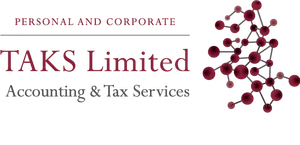In the realm of retirement planning, one encounters various terminologies and concepts, among which “Defined Contribution Pension Schemes” stand as a cornerstone. With the evolving landscape of financial planning and retirement security, it’s crucial to grasp the essence of these schemes.
What are Defined Contribution Pension Schemes? Defined Contribution Pension Schemes (DCPS) represent a type of retirement plan wherein both employers and employees make regular contributions, typically through payroll deductions, into individual accounts established for each participant. These contributions are invested in various financial instruments such as stocks, bonds, mutual funds, or other securities.
How do Defined Contribution Pension Schemes work? Unlike traditional defined benefit pension plans, where the retirement benefit is predetermined based on factors like salary history and years of service, DCPS focus on the contributions made and the investment performance of those contributions over time. The eventual retirement income from a defined contribution plan depends on factors such as the amount contributed, investment returns, and expenses incurred.
Key Components of Defined Contribution Pension Schemes:
- Contributions: Both the employer and the employee make contributions into the retirement account. The contribution amounts may vary based on company policies, employee choices, and regulatory limits.
- Investment Options: Participants typically have a range of investment options to choose from, depending on the plan. These options may include stocks, bonds, mutual funds, target-date funds, and more.
- Account Management: Participants are responsible for managing their individual accounts, including making investment choices and monitoring performance. Many plans offer resources such as online portals, financial advisors, or educational materials to assist participants in managing their accounts effectively.
Advantages of Defined Contribution Pension Schemes:
- Portability: Participants often have the flexibility to take their retirement savings with them if they change jobs, either by leaving the funds in the current plan, rolling them over into a new employer’s plan, or transferring them into an Individual Retirement Account (IRA).
- Transparency: Participants have visibility into their individual account balances and investment performance, allowing them to track their progress towards retirement goals.
- Potential for Growth: Unlike traditional pension plans, where the retirement benefit is fixed, the retirement income from a defined contribution plan can potentially grow over time through investment returns.
Considerations for Participants:
- Investment Risk: Since the investment returns determine the eventual retirement income, participants bear the investment risk associated with their chosen investments. It’s essential to assess risk tolerance and investment objectives when selecting investment options.
- Fees and Expenses: Defined contribution plans may incur fees and expenses associated with account management, investment management, and administrative costs. Understanding these fees and their impact on long-term returns is crucial for participants.
- Retirement Planning: Participants are responsible for managing their retirement savings and ensuring they have an adequate income stream in retirement. This may involve regular contributions, prudent investment decisions, and strategic planning for retirement goals.
Defined Contribution Pension Schemes play a significant role in modern retirement planning, offering participants flexibility, transparency, and the potential for growth. By understanding how these schemes work, their advantages, and potential considerations, participants can make informed decisions to secure their financial future in retirement. As the landscape of retirement planning continues to evolve, Defined Contribution Pension Schemes remain a valuable tool for individuals seeking to build and manage their retirement savings effectively.
